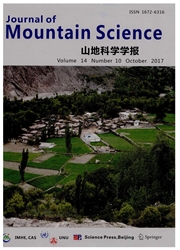

 中文摘要:
中文摘要:
尽管增加的注意被给予了向上作为对全球温暖的回答在高度植物种类变,关于在低高度、低的纬度的地区的这现象的研究没收到足够的注意。在这研究,调查被执行在 Tianmu 山区域以内在过去的十年沿着高度的坡度和增加的空气温度测试在 Moso 竹子(Phyllostachys pubescens ) 的向上的传播之间的关系,位于东南的中国。结果证明 Moso 竹子人口建立的山峰举起由 9.8 m 的一般水准升起了(? 敲灳 ' 虡 N 敶祬 . n 吗??
 英文摘要:
英文摘要:
Although paid to upward shift response to global phenomenon at low zones did not receive increasing attention has been of plant species in altitude as a warming, research on this altitudinal and low latitudinal enough attention. In this study, an investigation was carried out to test the relationship between the upward spread of Moso bamboo (Phyllostachys pubescens) along altitudinal gradient and the increasing air temperature over the past decade within the Tianmu Mountain region, situated in southeastern China. Results showed that the peak elevation of Moso bamboo population establishment rose by an average of 9.8 m (±2.7 m) during the past decade and significant correlation existed with mean annual temperature (P 〈 0.0001, n = 339) but not with annual precipitation (P = 0.7, n = 339), indicating that the upward shift of Moso bamboo along altitudinal gradients was driven primarily by warming temperatures. This upward shift could potentially reduce biodiversity by altering the species composition of the ecosystem. However, there is also the potential for increased carbon sequestration capacity of local forest systems, which would produce an additional carbon sink to combat rising atmospheric C02 concentrations and future global warming.
 同期刊论文项目
同期刊论文项目
 同项目期刊论文
同项目期刊论文
 Leaf litter decomposition rates of eight tree species within a zonal gradient of Chinese forests: in
Leaf litter decomposition rates of eight tree species within a zonal gradient of Chinese forests: in Elevated UV-B radiation did not affect decomposition rates of needles of two coniferous species in s
Elevated UV-B radiation did not affect decomposition rates of needles of two coniferous species in s Elevated UV-B radiation increased the decomposition of Cinnamonum camphora and Cyclobalanopsis glauc
Elevated UV-B radiation increased the decomposition of Cinnamonum camphora and Cyclobalanopsis glauc 期刊信息
期刊信息
